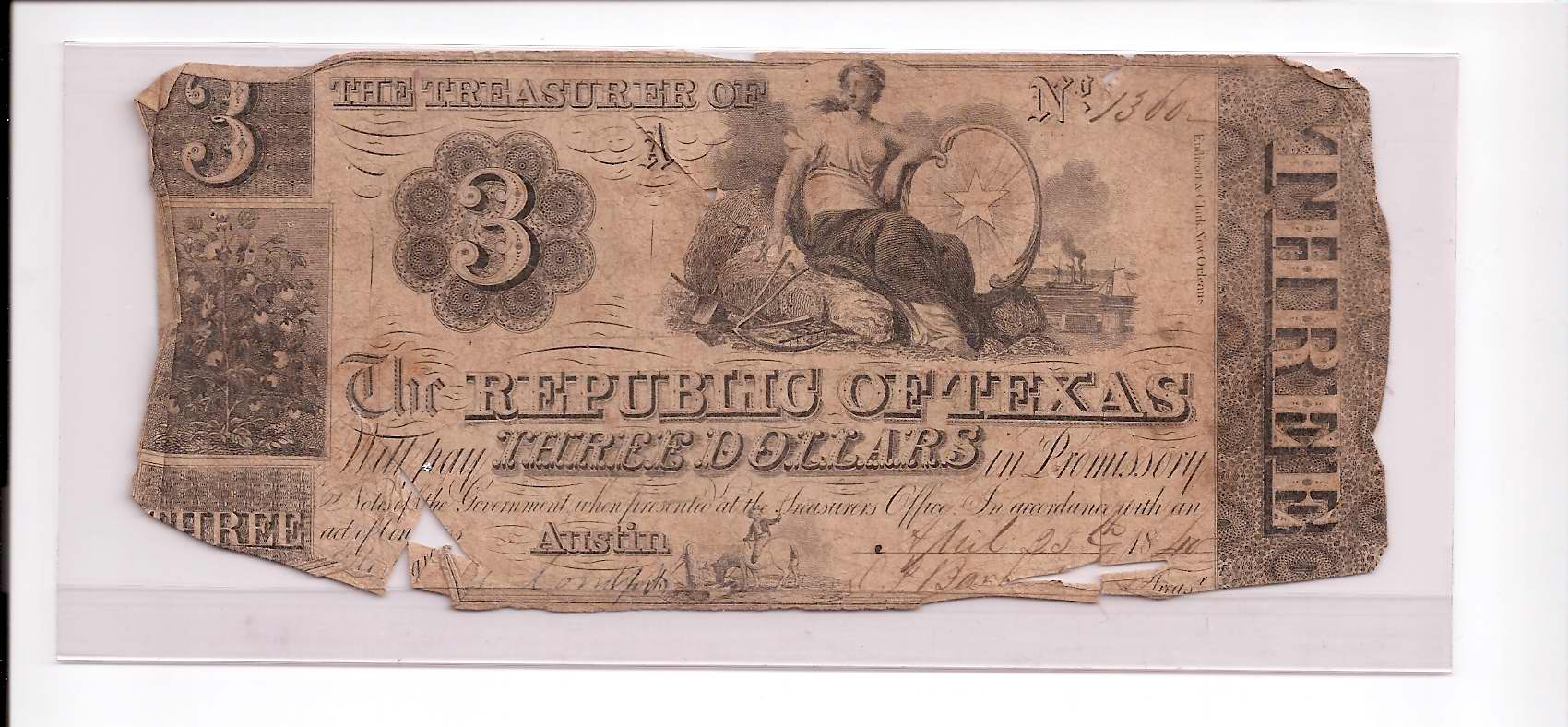This $3.00 change note of Republic of Texas was issued in Austin on April 25, 1840. Its serial number is #1300. The Republic of Texas’ currency was often referred to as ‘redbacks’ due to the red ink that was used on their reverse. This term, however, is a misnomer for the $3.00 change note since it lacks red ink on its reverse. The imagery used on this change note holds specific meaning for Texas. On the left there is a picture of a cotton plant which was, at the time of this note’s issue, the most valuable crop in Texas. The Roman goddess Ceres, goddess of agriculture, is also depicted on this note. She is shown sitting on a bale of hay, leaning on a mirror, with agricultural tools to her side. The reflection in her mirror displays the Lone Star of Texas. Next to the promise of payment through the treasury, at the bottom of the change note is a young man riding a horse, a reference to the ranching industry in Texas.
When the very first Texan congress convened on October 3rd, 1836, several different currencies were being used; these included Spanish and Mexican currency, the United States dollar and a currency known as ‘shinplasters’. This period United States history is sometimes known as the ‘Free Banking Era.’ At this time the United States did not have a central bank system and private companies were able to issue currency. It is estimated that over 30,000 different notes, all referred to as shinplasters, were issued by private companies during this period.
The Republic of Texas struggled with the issue of debt from its earliest days. The Republic was estimated to have been more than $1.25 million dollars in debt in the forms of loans and payment owed for goods and services at its foundation. In 1837 under the presidency of Sam Houston, Texas issued its first paper promissory notes. These notes were called star money, as it had a small star on the face of the bill. Because Texas had very little silver or gold, these were interest bearing notes that would accrue value and be paid out at a certain time. In 1838, change notes of $1.00, $2.00 and $3.00 were issued that functioned like treasury bills. In 1839, redbacks were printed and issued. The treasury printed over two million dollars in redbacks that were initially worth 37 cents to a U.S. dollar.
Unfortunately, Texas sank further and further into debt. By the end of Houston’s second term the debt had increased to twelve million dollars. By 1842, the redback was entirely worthless and had almost nothing backing its value. The treasury issued more treasury notes under the new name ‘exchequer bills,’ but ultimately very few Texans used them. This caused the currency of trade in Texas to become the United States dollar or the shinplasters. This period of economic hardship was worsened in 1841 when Antonio López de Santa Anna reestablished himself as president of Mexico and renewed hostilities with Texas. The crushing public debt, Texas’ difficulty obtaining loans, the worthlessness of its currency and the renewed hostiles with Mexico, all contributed to the peaceful annexation of Texas by the United States in 1845. This process brought Texas under the protection of a strong nation and led to the demise of the Republic of Texas’ currency.
